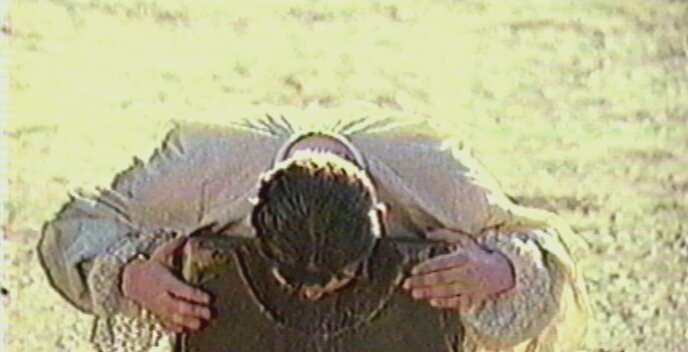
England, My England
The Succession
![]()

England, My England
The Succession
![]()
Charles II once claimed that he was so utterly
devoted to the Church of England, of which he was head, that he took as
many mistresses as there were Articles of Faith - 39. His religious
affiliation may have been in doubt, but his loyalty to his wife was never
in question. He was unquestionably unfaithful. Several of his
mistresses bore him children, but his queen remained childless, so there
were no legitimate heirs who could inherit the throne. What England
needed more than anything was a secure hereditary line - peace and continuity
instead of doubt and upheaval.
| The Children | The Mothers |
| James Crofts (1649-85), created Duke of Monmouth, 1663 | Lucy Walter (1630-58) |
| Charles Fitzroy (c1651-84) | Elizabeth Killigrew, Lady Shannon (born c1662) |
| Chales Fitzcharles, known as Don Carlos (1657-80), created Earl of Plymouth, 1675 | Catherine Pegge, Lady Green |
| Catherine Fitzcharles (born 1658) |
|
| Anne Palmer (1661-1722) | Barbara Palmer (nee Villiers), Countess Castlemaine, Duchess of Cleveland (1640-1709) |
| Charles Fitzroy (1662-1730), created Duke of Southampton 1675 and first Duke of Cleveland, 1709 |
|
| Henry Fitzroy (1663-90), created Duke of Grafton, 1709 |
|
| Charlotte Fitzroy (1664-1718), Countess of Lichfield |
|
| George Fitzroy (1665-1716), created Duke of Northumberland, 1683 |
|
| Mary Tudor (c1668-1726) | Mary 'Moll' Davis |
| Charles Beauclerk (1670-1726), created Duke of St Albans, 1684 | Nell Gwynne (c1642-1687) |
| James Beauclerk (1671-1680) |
|
| Chalres Lennox (1672-1723), created Duke of Richmond, 1675 | Louise Renee de Penancoet de Keroualle, Duchess of Portsmouth (1648-1734) |
The problem of the succession was further complicated by the fact that James Duke of York, Charles's only brother and rightful heir, was a Roman Catholic. At a time of religious unrest, Catholicism was literally demonised in the popular imagination. The ruling intelligentsia no more wanted a Catholic monarch, than did the poplace.
Catholicism was associated with foreign rule, as a return to Catholicism would mean the Pope would regain certain powers in the country, in place of the King. Added to this was the potential threat of war with Catholic countries on the Continent. Charles I, with his Catholic Queen, had been accused of Catholic tendencies and had involved the French in his wars against his own people. The last Catholic monarch, Mary I, had married Philip II of Spain, and burned Protestant 'heretics' at the stake. Memories of the Gunpowder Plot, a Catholic plot to overthrow the Protestant King James I and VI and his government, were still fresh, the overthrow of which was celebrated (and still is) on 5 November each year.
Most of Britain had been Protestant for over a century at this stage. Increasing moves towards puritanism brought in more individualism in worship and less power for the priesthood. There was little desire to return to the old religion.
Laws were passed forbidding Catholics from holding positions of power. Oaths had to be sworn.
Charles II was plagued by threats to his life in his later years, as the question of the succession became ever more prescient. In England, My England we see Shaftesbury persuading the Duke of Monmouth that he should be king on his father's death. With James II on the throne, Monmouth and his followers believed he would be welcomed as the most appropriate Protestant to ascend the throne. He landed on the English shore and began to march on London, but gained little support, and was soon captured and executed.

If there was one thing that stopped the British from denying James the throne fromthe outset it was the memories of regicide, the civil wars that preceeded Charles I's death, and the confusion and wars of the Commonwealth years. Though there was a great deal of opposition and fear, most people acknowledged James as their true monarch.
Another reason to tolerate James as king was the fact that he had two daughters, both of whom were Protestant, which meant that the throne would be returned to a Protestant monarch on his death. However, a new marriage was made, and a son was born to the Catholic monarchs. Panic ensued, and a group of parliamentary leaders secretly approached Mary, James's elder daughter, and her husband, William of Orange to come and take the reins of the British Isles.
As William landed, James fled to Catholic
Ireland. He called on the French for help, and much of William and
Mary's reign was blighted by stalemate wars in Ireland against James.
It is remembrance of some of these battles which still causes such pain
in Ireland today. The Orangemen are named for William of Orange.
![]()
Home /The
Film / Sets and locations/Biographies/
The
Music /
Quotes/
History / Sources,
Links and Credits / Guestbook
/
Site
Plan
![]()
Page created 5 May 2002
Copyright belongs to Deborah Norris, 2002